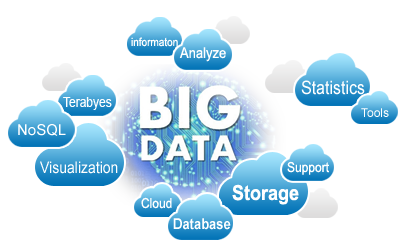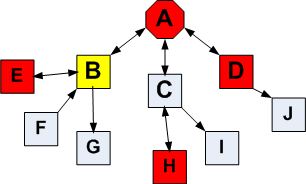Big data is big news in almost every industry, and telecom is no exception. The report “Big Data and Telecom Analytics Market: Business Case, Market Analysis & Forecasts 2014 – 2019” from Mind Commerce forecasts a 50% growth by 2019 in the big-data-driven telco analytics environment, which will deliver annual revenue of $5.4 billion. Apart from opening up a multitude of jobs for telecom data scientists, data will increasingly become a competitive differentiator for telcos.
What Does Data Driven Mean For The Telecom Industry
Topics: Telecom Data Analytics, Big Data, ESAP, Data Driven
Is There a Life After Rural Call Completion Reports?
Over the last two years, the FCC has been in the process of determining whether it still makes sense to have telecom service providers collect and report on call answer and completion rates on long distance domestic calls that were handed-off to Interexchange Carriers who provided routing, transport and completion functions for the calls made to customers of a NECA-provided list of small ILECs as well as to the much larger non-rural local exchange service providers in aggregate.
5 Reasons Why Big Data Analytics is Critical to The Telecom Industry
The telecoms industry in the U.S. is expected to continue growing in 2017, according to Deloitte’s latest outlook report. Furthermore, we anticipate providers will work hard to remain competitive in the battle to attract customers and create new revenue streams. With data generated from every customer touch point ranging from calls to text messages, video downloads, mobile commerce and service calls, telcos have access to significant amounts of information. Implementing big data analytics (BDA) is critical to enable them to make use of this intelligence to get ahead.
Topics: Telecom Data Analytics, Big Data
Rethinking Telco Data Sharing to Allow Faster, Cheaper Failures (and Occasional Successes Too!).
At ATS, we work at the intersection of Telecom and IT and, in order to focus our efforts on what we’re really good at, we outsource our IT wherever possible. So, naturally, we’ve turned to a few of the big cloud providers for help here. If you’re using our services, you’re also using AWS’ and Google Cloud Platform -- they’re both too big and impressive for any mid-size software company like us to ignore, and we firmly believe our customers are better served when we focus on what we're really good at, which is developing software. But, when you dig a little deeper, you realize that some of the cloud providers' tech offerings tell a tale of how they got big and impressive in the first place. What can the Telco industry learn from the rise of these Retail and Search giants, given what they've exposed as cloud services?
Topics: Usage Based Billing, Telecom Data Analytics, Cloud, Cloud Computing
When the Federal Communications Commission (FCC) first mandated Local Number Portability (LNP) on June 27, 1996 in the 100 largest Metropolitan Statistical Areas by October 1, 1997 and elsewhere by December 31, 1998 as a spur to open up competition for customers among local service providers, I doubt that it had any idea how pervasive their requirement would become.
At the time of the initial FCC ruling on LNP, the concept of allowing a user to transfer his/her fixed-line telephone service from one service provider to another without changing the service’s ten digit telephone number was viewed as the end-of-the-world by Regional Bell Operating Company (RBOC) and Independent Local Exchange Carrier (ILEC) personnel.
Topics: Telecom Data Analytics, Regulatory, LNP
The most common issue we run into when beginning work with a new customer, whether they are a telecom or cable company, is gaining access to data records. Call detail records (CDRs) and IP detail record (IPDRs) contain an enormous wealth of information that can be used to drive KPIs and analytics for almost any part of the business including operations, marketing, regulatory, revenue assurance, etc. Unfortunately, we find that that majority of the time these data records are owned by a specific department and gaining access to them can take weeks, months, or in some cases even longer. As a solutions provider, this can obviously be frustrating. But when an internal group has the same issues accessing its own data, it can be downright debilitating and ultimately impact customer experience and revenue.
Topics: Telecom Data Analytics, Big Data, Broadband, ESAP, Cable, Machine Learning
The title is most likely one that would cause certain readers who happen to be service providers to experience a little negative reaction upon reading it. However, the title is not meant to be anything more than a cause for some reflection in that there is considerable amount of information about customers that is not always utilized to expose traits and trends that could be harnessed to generate increased revenue as well as to promote customer loyalty in an environment of ever-growing competition.
Topics: Telecom Data Analytics, Marketing, Big Data
The title is somewhat misleading in that I am sure there are many user tasks that go beyond the scope of Big Data and Cloud Computing to satisfy. However, being a dinosaur-type with over fifty years of professional experience in the telecom environment, I am continually amazed by the capabilities and associated minimal costs with implementation of systems and processes that were only dreamed about when I started in the telecom business.
Topics: Telecom Data Analytics, Big Data, BigQuery, Cloud Computing
If you’re reading this, you’re probably the kind of person who’s attended a Big Data conference, and maybe find yourself sitting in on those “How to scale to your first x million users”. The problem is that in the real world, the problem isn’t so much scaling up from a prototype into production, but having enough horsepower to wrangle data in the conceptual phase, then scale down into a business application (then scale up again when customers want access to the raw data, but I’m getting ahead of myself.) As an industry, we’ve relied too heavily on borrowed-terms from architecture because the analogy breaks down when you consider that an architect doesn’t usually have to build first. Here, we’ll look at how Google’s BigQuery helped us do just that.
Topics: Telecom Data Analytics, Big Data, BigQuery
What does social network analytics mean in the telecom space? Is it Twitter? Facebook? LinkedIn? Maybe, but the real power of social network analytics lies in the data the telecom companies record and process every minute of every day; Voice and SMS records. The social networks that exist within your subscriber base is incredible rich with information that can tell you anything from what movie they might want to watch next to who is getting ready to churn away to a competitor.
This information has been available for as long as telephones have been around. But only in the past few years with the explosion of computer and cloud power has it been possible to truly aggregate the data and turn it into meaningful and actionable information. Similarly, the idea of a social network has been around since the beginning of time. People’s social networks include friends, family, and co-workers who can influence them and whom they can influence as well. The strength of the connections can be measured by analyzing the data to identify those individuals within a social circle who have the power to influence others one way or another.
Topics: Telecom Data Analytics, Marketing, Social Network Analytics









